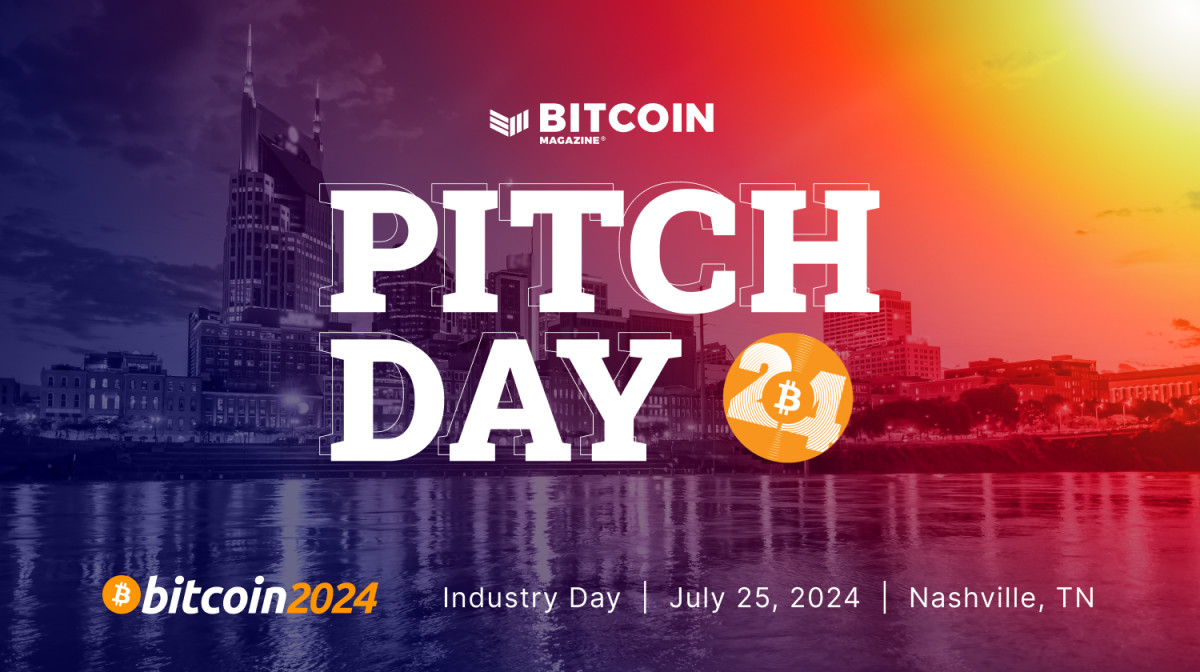Month: March 2024
Stratum Reference Implementation Launches SRI 1.0.0 To Enhance Bitcoin Mining
The Stratum Reference Implementation (SRI) team has unveiled SRI 1.0.0, a new milestone in their journey to decentralize and optimize bitcoin mining, according to a press release sent to Bitcoin Magazine. This latest release is now available for immediate testing and seamless integration.
Some key highlights of SRI 1.0.0 include:
Miners can connect to SV2 pools without upgrading existing SV1 firmware through Translation Proxy or directly using an SV2 firmware device like BraiinsOS.Miners have the flexibility to run their bitcoin nodes, construct templates, and declare them to the SV2 Pool.The implementation of pool fallback functionality ensures continuity in mining activities even if a pool decides to censor transactions, thereby incentivizing pools to prioritize miners’ interests.
This new version is the culmination of enhancements in the Stratum V2 specification achieved through collaboration within the working group and rigorous testing with the interoperability suite to ensure seamless compatibility between implementations of the Stratum V2 protocol.
The release allows miners using SV1 or SV2 firmware to connect directly to an SV2 Pool or through a translation proxy. Miners can construct their block templates using a locally hosted Job Declaration Client and a patched version of Bitcoin Core Node, enabling them to send their templates to the Job Declarator Server operated by the SV2 Pool. Importantly, this update also allows independent third parties to run the node and JDC, expanding operational capabilities.
The newly implemented pool fallback feature ensures miners maintain mining activity by automatically switching to alternative pools in the event a pool rejects their templates. This mechanism serves as a strong incentive for pools to act in the miners’ best interests, ensuring miners’ hash power remains secure and competitive.
SRI’s user-friendly pool setup and upcoming enhancements make it an attractive option for miners and pools seeking streamlined mining experiences. The project says it welcomes contributions and support from individuals and corporate entities interested in providing grants to help accelerate the development, research, and innovation in bitcoin mining technology.
EUR/USD to continue to decline as ECB poised to cut rates faster than the Fed: MS
Post Content
Dollar gains on risk sentiment, Swiss franc falls on surprise rate cut
Post Content
Bitcoin’s Surge to All Time High: What It Means for Your Investment Future
Bitcoin, the first and most popular cryptocurrency, has been making headlines with its recent surge to a new all-time high of over $72,000. This remarkable price increase has sparked renewed interest in Bitcoin as an investment opportunity, leaving many wondering what this means for their financial future.
Investors may see this surge as a validation of Bitcoin’s potential as a long-term store of value and may allocate more of their portfolio to cryptocurrencies. However, the rapid rise in price may also raise concerns about potential volatility and the sustainability of such gains, prompting investors to carefully evaluate the risks before making investment decisions.
Understanding Market Dynamics and Risks
While Bitcoin has grown significantly over the years due to various factors, including rising institutional adoption, increased investor interest, and greater acceptance by traditional financial organizations, it’s still seen as a highly volatile asset. This level of vulnerability which can be affected by supply and demand, government regulation, and sensationalism, is not exclusive to Bitcoin. It’s also evident in traditional investment avenues.
Investors should understand the financial markets and take a well-considered approach to investing. No stock investment is a sure thing, and Bitcoin is no exception. However, with the right strategies, investors can capitalize on Bitcoin’s potential for high returns while mitigating the risks associated with this market.
Strategies for Incorporating Bitcoin into Wealth Preservation
Despite the unpredictability of Bitcoin stock, many are attracted to it since it acts as a hedge against inflation. With traditional currencies, governments can print more money, leading to a loss in purchasing power. However, Bitcoin’s finite supply makes it immune to inflation, contrasting with traditional currencies where governments can print more money, leading many to view Bitcoin as a hedge against inflation.
Here are some strategies for incorporating Bitcoin into your financial security:
Diversify Your Investments
Investors should diversify their portfolios and allocate a portion to Bitcoin and other cryptocurrencies. This will help mitigate risk and capitalize on Bitcoin’s potential high returns. Stablecoins, which are cryptocurrencies tied to a stable asset like the US dollar, can be used as a buffer for Bitcoin’s volatility.
Take Calculated Risks
To safeguard and increase wealth effectively, investors must be willing to take calculated risks for sustained growth and long-term profitability. These can include strategic savings, investing in a mix of asset classes, and incorporating Bitcoin into asset protection efforts. They must also be aware of scammers seeking to exploit the growing interest in cryptocurrencies and take measures to safeguard their investments against fraudulent schemes.
Educate Yourself
Before making any financial decisions, it is important to educate yourself on the market. This is especially true for Bitcoin, given its unique characteristics. Take the time to research the technology behind this cryptocurrency, its market trends, and its potential impact on traditional financial systems. Given its resilience, portability, and divisibility, it’s also wise to explore Bitcoin’s value compared to gold, stocks, and other conventional investments, to make an educated decision that can help increase your monetary gains.
Regulate Your Emotions
It’s essential to keep emotions in check and stick to a well-considered investment plan. Avoid making impulsive decisions based on market variations or FOMO (fear of missing out). This will help ensure a more rational and stable approach to incorporating Bitcoin into your wealth management strategy. The key is approaching Bitcoin as a long-term investment rather than trying to time the market.
Use Dollar-Cost Averaging
Dollar-cost averaging is a tactic where you invest a fixed amount at regular intervals, regardless of market fluctuations. This can aid in smoothing out the effects of market instability and potentially reduce vulnerabilities. The beauty of this approach is that it can be applied to Bitcoin and other cryptocurrencies, making it an effective way to incorporate them into your portfolio.
Utilize Tax-Loss Harvesting
Tax-loss harvesting is a technique where investors sell investments at a loss to compensate for any capital gains, resulting in lower taxes. Given Bitcoin’s volatility, this strategy can be advantageous when incorporated into your portfolio. However, be mindful of the IRS guidelines and consult with a tax professional for guidance to prevent any legal issues.
Stick to a Long-Term Plan
Getting caught up in the hype and making short-term decisions based on Bitcoin’s price fluctuations can be appealing. However, to effectively include Bitcoin in your financial portfolio, it’s vital to stick to a long-term financial plan. This will help prevent emotional reactions to market changes and allow for a more strategic approach.
Future Projections for Bitcoin
Many experts believe Bitcoin’s surge to over $72,000 is just the beginning of its potential growth. One projection by the CEO of Ark Invest estimates a future price range of over $1 million per Bitcoin by 2030. While no one can predict the exact trend of Bitcoin’s value, it’s clear that this cryptocurrency has established itself as a viable and valuable asset class.
Bitcoin’s recent surge further solidifies its position as a legitimate investment option. With growing institutional acceptance and continued interest from investors, it’s likely to see even more significant growth in the future. Understanding the risks and having a well-considered approach to incorporating Bitcoin into wealth preservation efforts can help investors capitalize on this potential.
As with any investment, thorough research and careful consideration are crucial to making informed decisions and maximizing returns. Monitor Bitcoin’s future developments and consider including it in your investment strategy for long-term financial growth and stability.
This is a guest post by Miles O. Opinions expressed are entirely their own and do not necessarily reflect those of BTC Inc or Bitcoin Magazine.
From Wall Street to Main Street: Are Bitcoin ETFs Signaling a New Era in Crypto?
Bitcoin and the rest of crypto went through a brutal cycle in the last two years. Dubbed “crypto winter,” the unforgiving market crushed the hopes of many traders, startup founders, and investors.
Marked by scandals, regulatory uncertainty, and lots of FUD (fear, uncertainty, and doubt in crypto parlance), crypto winter brought down some of the industry’s most significant projects and companies.
However, the US SEC’s successive approvals of eleven spot BTC ETF applications on January 10, 2024, changed all perspectives, turning many bullish.
It’s not just institutions that are optimistic about the development. Even smaller retail traders are excited about the new ETFs. If you are a retail trader sharing your strategies and showcasing a public crypto portfolio for your audience, the rising interest in Bitcoin will likely increase your following and boost your profitability.
New ETF Products Introduced
Wall Street came on strong, with the world’s most prominent asset managers like BlackRock, Fidelity, Valkyrie, VanEck, Franklin Templeton, ArkInvest/21 Shares, Grayscale, Bitwise, Invesco/Galaxy, and WisdomTree launching their Bitcoin ETFs with aggressive fanfare.
The multi-billion- and trillion-dollar institutions promoted and competed Bitcoin-based products in the open market for the first time.
The resulting billions of dollars in inflows broke ETF records and were a massive, unexpected win for Bitcoin. Allocations to US spot Bitcoin ETFs overwhelmed hundreds of millions in outflows to incumbent fund Grayscale Bitcoin Trust (GBTC), raking in over $2.4 billion in the first week.
BlackRock’s IBIT and Fidelity’s FBTC brought in $1.6 billion and $648 million as they rounded up their first week. In addition, the two trillion-dollar asset managers BlackRock and Fidelity and the other funds offering spot Bitcoin ETFs have started a Bitcoin accumulation race. Bitcoin’s price surged at the ETF news, rising past $50,000 for the first time since late 2021.
Thus, Bitcoin’s watershed moment appears to have begun. But what does it imply for money, wealth, and investing? What does it mean for cryptocurrency? Will the lines between decentralized assets and traditional products finally blur? Here, we discuss whether the historic approval of Bitcoin ETFs will mark a defining transformation in crypto and finance.
How Do Spot Bitcoin ETFs Work?
Spot Bitcoin Exchange-traded Funds (ETFs) are financial products traded on public exchanges that track the performance of Bitcoin.
Unlike Bitcoin futures, which were approved years ago and have been traded on the Chicago Mercantile Exchange (CME), spot Bitcoin ETFs hold actual Bitcoin through a registered custodian.
An ETF buys BTC through authorized crypto exchanges or other Bitcoin holders. The Bitcoin is stored in a secure digital wallet using cold storage. Cold storage means the wallet is offline. In the case of spot ETFs, a designated custodian handles the crypto asset’s cold storage and provides additional layers of security.
After secure storage is ensured, the ETF issues the corresponding shares. A share corresponds to Bitcoin or a specified unit of Bitcoin and must reflect the prevailing price. Shares are publicly traded on traditional stock exchanges. The ETF shares must follow the price of Bitcoin as closely as possible. ETFs must regularly rebalance their holdings, buying or selling their BTC as needed.
A spot ETF’s price can depart from the underlying asset’s value. To align the fund with the asset’s real value and maintain the price, authorized participants (APs) are tasked to intervene. The process of creating and redeeming shares is done by the APs, which are typically large financial institutions.
The APs create or redeem shares based on market demand. Should ETF shares trade at a discount or premium, the APs redeem or create the ETF shares in large blocks. These measures arbitrage the difference so the share price aligns with the current Bitcoin price. APs profit from the arbitrage opportunity when the ETF price deviates higher or lower versus the underlying asset’s value.
On the investor and trader side, buying a spot Bitcoin ETF is similar to buying regular shares in any security or ETF. Hence, investors can gain exposure to BTC indirectly by buying shares without holding the cryptocurrency.
Efficiency and liquidity in the market are maintained by market makers who keep offering to buy or sell shares of the ETF. Market maker activity is critical to Bitcoin ETF stability. They ensure that investors can easily buy or sell the asset whenever necessary.
Spot Bitcoin ETFs: A Game-changer for crypto?
Bitcoin and the rest of crypto have come a long way since the early days when there were barely any exchanges to trade them.
However, digital assets have struggled to break through to the mainstream because of numerous regulatory challenges that heightened in the past few years. Negative statements from regulators and banks dampened sentiment and caused Bitcoin and the rest of crypto to flounder.
Spot Bitcoin ETFs have been through a challenging decade-long journey as well. The Winklevoss twins filed the first spot Bitcoin ETF, the Winklevoss Bitcoin Trust ETF, in 2013. It was rejected by the US SEC twice over risk-related concerns in what was once a nascent crypto industry.
Several followed since the Winklevoss ETF application, and all were greeted with a dozen rejections on the grounds of inadequate investor protection. The Clayton era of regulation, referring to the period when SEC Chair Jay Clayton was in charge, marked the lowest point for Bitcoin ETFs.
In the summer of 2018, the SEC rejected nine Bitcoin ETF applications in a single day.
Years later, Bitcoin and crypto scored an unlikely legal win when Grayscale fought the SEC’s rejection of the Grayscale Bitcoin Trust (GBTC) application to convert to an ETF. A federal appeals court ruled that the SEC was mistaken in its rejection of Grayscale’s application, noting that the surveillance arrangements on the approved Bitcoin futures ETFs would suffice for spot Bitcoin ETFs.
As a result of this landmark win, the Securities and Exchange Commission could no longer use the same argument to reject future Bitcoin ETF applications of a similar nature. Under pressure, the new SEC Chair Gary Gensler issued a formal statement on January 10, 2024, approving the trading of several new spot Bitcoin ETP shares.
The unexpectedly triumphant arc of Bitcoin ETFs has ushered in optimism in the market. The approved spot Bitcoin ETFs, whose issuers include the largest asset manager in the US and the world, have potentially opened the floodgates for a new audience of retail investors and institutions—an audience with little or no experience in buying and selling cryptocurrency directly.
Impact of Spot Bitcoin ETFs
We’ve had a few weeks to observe the market response to spot Bitcoin ETFs. The approved ETFs have demonstrated tremendous inflows and record-breaking numbers.
The “New Nine” Bitcoin ETFs: Early success
The newly approved spot Bitcoin ETFs are popularly called the “new nine.” Trading volumes for the new nine ETFs notched a new daily record.
As BTC surged to $54,938 on February 26, trading volumes for all nine ETFs topped $2.4 billion. According to data from Eric Balchunas, a Bloomberg ETF analyst, the total volume on February 26 beat the prior record of $2.2 billion on January 11, the first trading day. These figures exclude the volume from Grayscale’s GBTC, a converted bitcoin ETF product.
BlackRock’s spot Bitcoin ETF IBIT recorded its biggest trading day so far. Nasdaq data showed that over $1.3 billion in IBIT shares were traded, exceeding its previous record of $1 billion when it debuted on January 10.
IBIT took the most volume out of all the ETFs. Fidelity’s FBTC placed second with $576 million in inflows. ARK 21 Shares (ARKB) recorded $276 million in inflows, while the Bitwise (BTB) spot Bitcoin ETF tallied $81 million.
New institutional interest
The exchange-traded funds have dramatically catalyzed new institutional interest in crypto. The US SEC’s approval provides a favorable signal for large institutions and market participants waiting for more familiar access to the digital asset class outside of direct buys through crypto exchanges, which carry inherent custody and volatility risks.
Institutional fund managers could start adding Bitcoin ETFs to their investment funds.
Moreover, retirement planners can include them in employer-sponsored 401(k)s. US investors can now hold crypto in their brokerage accounts—something impossible before.
Interest among retail investors
Where institutions go, retail follows. The assurance of investor protection and the wide acceptance of Bitcoin ETFs will encourage retail to participate. Mass retail now has a relatively safe way to gain exposure to crypto through a regular brokerage account.
Bitcoin ETFs will inevitably bring crypto exposure to a more diverse set of holders with varying sizes and experiences in the market. Access to Bitcoin today is as simple as purchasing an ETF from a regulated asset manager. In addition, Bitcoin could start turning up in mainstream portfolios.
New credibility and status for crypto
The new kind of ETF could increase the distribution in the US and boost the credibility of crypto as an asset class, according to Kevin de Patoul, CEO of Keyrock, a crypto liquidity provider, in an interview with CNBC.
The idea of a US spot Bitcoin ETF significantly changes the public perception of Bitcoin. It eliminates doubts about Bitcoin’s legitimacy and erases misconceptions about its infamous reputation as a tool to aid crime. This application has been proven to be a minor percentage of its overall use.
Hence, the US SEC’s approval lent credibility and status primarily through regulatory certainty. Crypto is on its way to becoming a formal asset class, widely traded on any public exchange like other familiar investment vehicles.
More crypto ETPs to follow
The ability to hold Bitcoin in mainstream portfolios green-lights portfolio diversification into the crypto asset. Many expected significant capital inflows into the market and were satisfied.
A spot Ethereum ETF may not be far behind. Valkyrie CIO Steven McClurg expects a spot Ethereum ETF approval within a year or two. If a spot Ethereum ETF is eventually launched, it could mark another boost for the status of crypto assets.
ETF effect on BTC and crypto prices
The record-breaking response to the bitcoin ETFs and Bitcoin’s price surge indicates the market’s current sentiment. Both have continued to spur bullishness among investors and institutions.
The uptick in demand, coupled with diminishing supply, could cause an acceleration in price. As of this writing, BTC rose to above $59,000.
Then, there is the question of history repeating itself. Experts point out how the total market cap of gold exploded after the first gold ETF was launched in 2004. Bitcoin, being digital gold, could follow the same path.
These days, Bitcoin ETF issuers have been buying approximately 10 to 12 times the amount of BTC produced daily. This has led to a 2 percent price increase or roughly $1,000 daily. Many experts agree that the demand from ETF issuers is the primary reason for the significant daily uptick.
An analysis by crypto startup founder, expert, and Bitcoin investor Mark van der Chijs found that the price jumps occurred around the settlement period before the opening of the US market.
The exponential nature of the demand has been pressing holders to sell their holdings to fill the ETF orders. These sales command higher prices as the current holders or users do not believe BTC is peaking.
The higher prices trigger FOMO (fear of missing out) among traders and ETF investors. The FOMO leads to higher demand, triggering a further increase in prices.
Many experts agree this market is uncharted territory. However, Van der Chijs is sticking to his prediction of $1,000 increases on average per trading day over the coming weeks.
Incoming supply shock?
At least two factors could contribute to a drastic increase in price and Bitcoin supply shock over the next three months: continued high demand for ETF shares and the Bitcoin halving event in April.
After the upcoming halving, miners’ block rewards will be cut in half. As a result, the rate of BTC daily production will decrease.
At the moment, approximately 900 BTC is being created daily. After the halving event, this number will drop to 450 BTC. This will further dwindle the supply and lead to a discrepancy in supply and demand. The production slash could lead to higher BTC prices as investors of all levels and ETF issuers scramble to increase holdings.
There is a risk of ETFs failing too soon. Most financial advisors, therefore, allow the sale of shares 90 days past launch or after 90 days of trading. As the ETFs started trading on January 11, the 90-day period should commence by early May, further pushing BTC’s price upward.
It is possible to have a black swan event, seeing BTC break its previous record of $69,000 and achieve a new all-time high before the halving. Chijs predicts $100,000 BTC in the coming two to three months.
Impact on the broader financial ecosystem
Some have noted that big banks were notably absent during the ETF action. Banks can participate in the ETF ecosystem but need the US SEC to redefine crypto assets.
In a stunning move, a trade group coalition making up the Banking Policy Institute asked the SEC to modify the rules around crypto asset custody, allowing them to act as custodians, as is the regular practice for most ETPs. Bitcoin proponents would not have imagined such interest back in the day, but here we are.
Increased competition: Fee wars
Despite significant Grayscale-related outflows in the first few days, ETFs stabilized to massive net-positive inflows. Expect competition among Bitcoin ETFs for features and fees. Grayscale Bitcoin Trust (GBTC) is the most expensive—offering 1.5 percent in fees. Bitwise opts not to charge fees for the first six months and then caps them at 0.2 percent afterward.
A New Era Merging Wall Street, Crypto, and Main Street
The triumphant launch of spot Bitcoin ETFs broke all expectations and models. Early on, ETF issuers were able to bridge Wall Street, crypto, and Main Street by creating a familiar and easily accessible investment product.
The early success of ETFs has numerous implications for the status of digital assets, the demand around Bitcoin, the dynamism of crypto trading, the total crypto market cap, and how people build mainstream portfolios from now on.
Spot Bitcoin ETFs are a crucial milestone in the maturity of Bitcoin and crypto as an asset class. They officially begin significant institutional involvement with trillion-dollar players competing for dominance. Demand is expected to increase as the funds accumulate Bitcoin at rates exceeding daily production.
Despite the promising data and optimistic projections, we remain in uncharted territory. Corrections are inevitable, and black swan events could happen.
Wall Street has brought crypto to Main Street, but this development’s full impact and transformation are still unfolding.
Navigating the landscape requires a keen understanding of market dynamics, careful risk management, and keeping a well-informed perspective as events unfold at unprecedented speed.
This is a guest post by Ivan Serrano. Opinions expressed are entirely their own and do not necessarily reflect those of BTC Inc or Bitcoin Magazine.
Dollar steadies after sharp losses; Swiss franc slumps on rate cut
Post Content
Japan Finance Minister Suzuki says monitoring FX with high sense of urgency
Post Content
Asia FX surges, dollar sinks on Fed’s rate cut signals
Post Content
Announcing: Pitch Day at Bitcoin 2024 – Discovering the Next Class of Bitcoin Startups
Pitch Day at The Bitcoin Conference is back! Bitcoin Magazine and The Bitcoin Conference are looking for the next wave of Bitcoin startups to compete in the ultimate Bitcoin pitch competition. Taking place in Nashville July 25-27 at Bitcoin 2024, the world’s largest Bitcoin conference, founders will present their vision on Bitcoin’s biggest stage to panels of judges across 6 categories:
Layer 2 + Scaling TechnologyMining + EnergyInvesting (Alpha)Open SourceOrdinalsLocals Only (Nashville-based startups)
Pitch Day at the Bitcoin Conference has highlighted elite Bitcoin startups across the ecosystem since 2021 with previous winners including: Debifi, Geyser Fund, Nunchuck, Alby, The Bitcoin Company, Elixir Games, and 24 Exchange.
Layer 2 + Scaling Technology
As Bitcoin adoption heats up, demand for block space continues to grow, and we are searching for innovative projects at the forefront of increasing the capacity of Bitcoin to scale and incorporate greater transaction volume while expanding use cases beyond monetary value transfer.
The Layer 2 + Scaling Technology track is focused on identifying top founders and companies working on applications related to Lightning, alternative Layer 2 proposals, cross-chain settlement and the utilization of newly identified tech including BitVM.
Mining + Energy
Bitcoin mining maintains a unique position in the broader energy landscape given its flexibility, geographic distribution and capacity as a tool for unique energy services. The Mining + Energy track will bring together innovators creating novel business applications for bitcoin mining, hardware, software and firmware for operations, as well as the digital infrastructure for enabling the growth of bitcoin mining around the world.
Investing (The Bitcoin Alpha Competition)
First launched at Bitcoin 2023 in Amsterdam, The Bitcoin Alpha Competition, sponsored by Samara Alpha Management, is back – setting out to identify the next top Bitcoin fund manager to offer $1 million USD in seed capital to deploy their strategy.
As the bitcoin market has changed dramatically with the advent of Spot ETFs in the United States, the Investing track seeks to highlight innovative strategies delivering out performance with BTC as the benchmark.
Open Source
Open source technology lies at the heart of Bitcoin and is crucial to providing the valuable services that everyone transacting on Bitcoin today enjoys. The Open Source track is bringing the magic of the Open Source Stage into the pitch arena and will recognize the top open source projects in the Bitcoin ecosystem.
Ordinals
Ordinals have exploded onto the scene in the past year, upending the market for digital collectibles and altering the market dynamics of the entire crypto ecosystem. The Ordinals track is seeking the top projects utilizing inscriptions – whether that is in the form of digital collectibles or the infrastructure enabling the growth of ordinals as a whole.
Locals Only
Pitch Day is coming to Nashville, and it’s only right to highlight the homegrown Bitcoin talent in the Music City. The Locals Only track is putting the top Nashville-based Bitcoin startups on the map no matter what sector of the Bitcoin economy they operate in.
Think You Have What it Takes?
Interested startups and open source projects may apply to compete in Bitcoin Pitch at Bitcoin 2024. Click here to enter the competition.
Interested in Sponsoring?
Click here to inquire about title sponsorship, individual track sponsorship, or to see how your Venture fund can get involved as a judge for the competition.
Dollar weakens after Fed meeting, yen strengthens
Post Content








